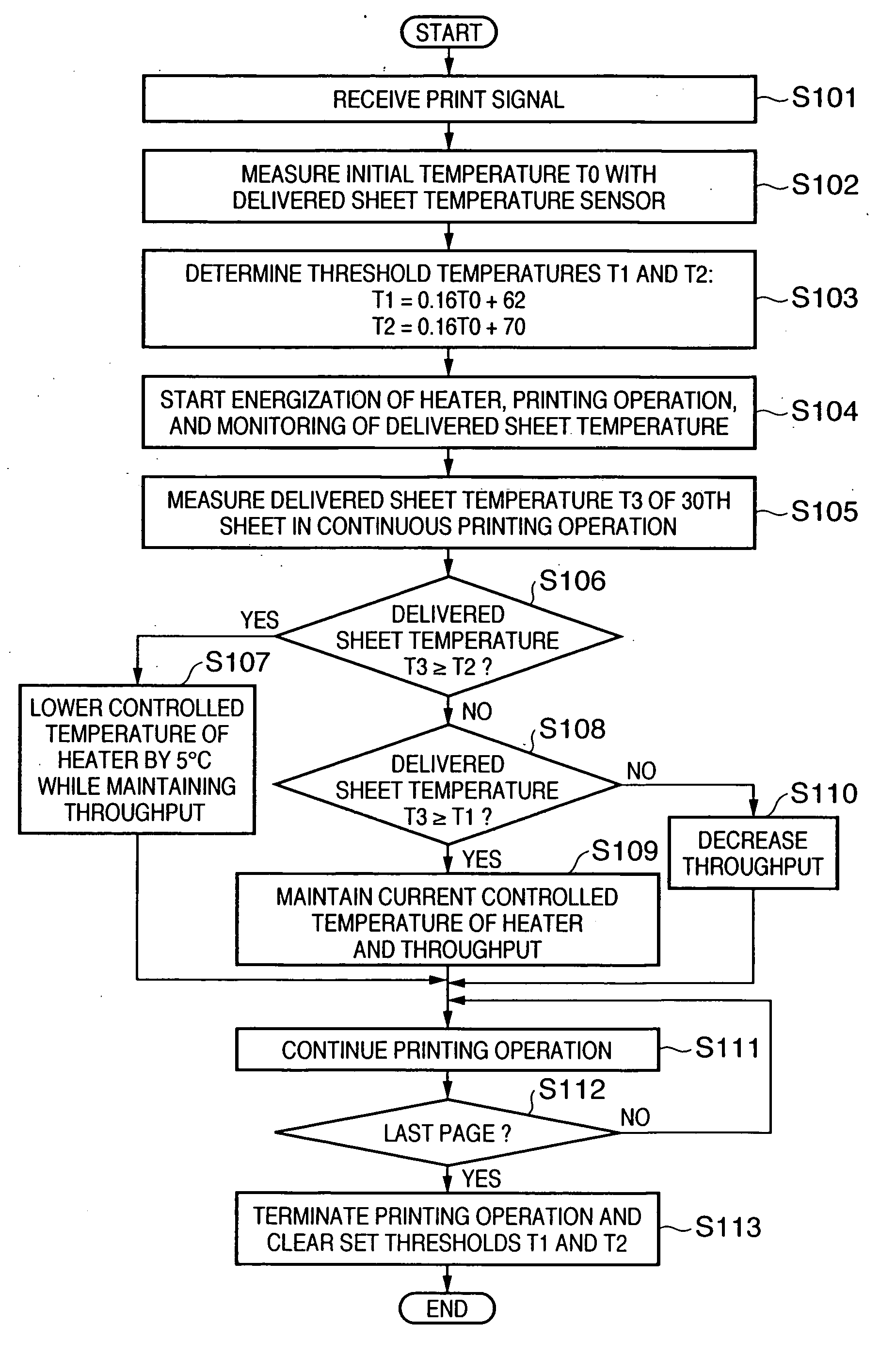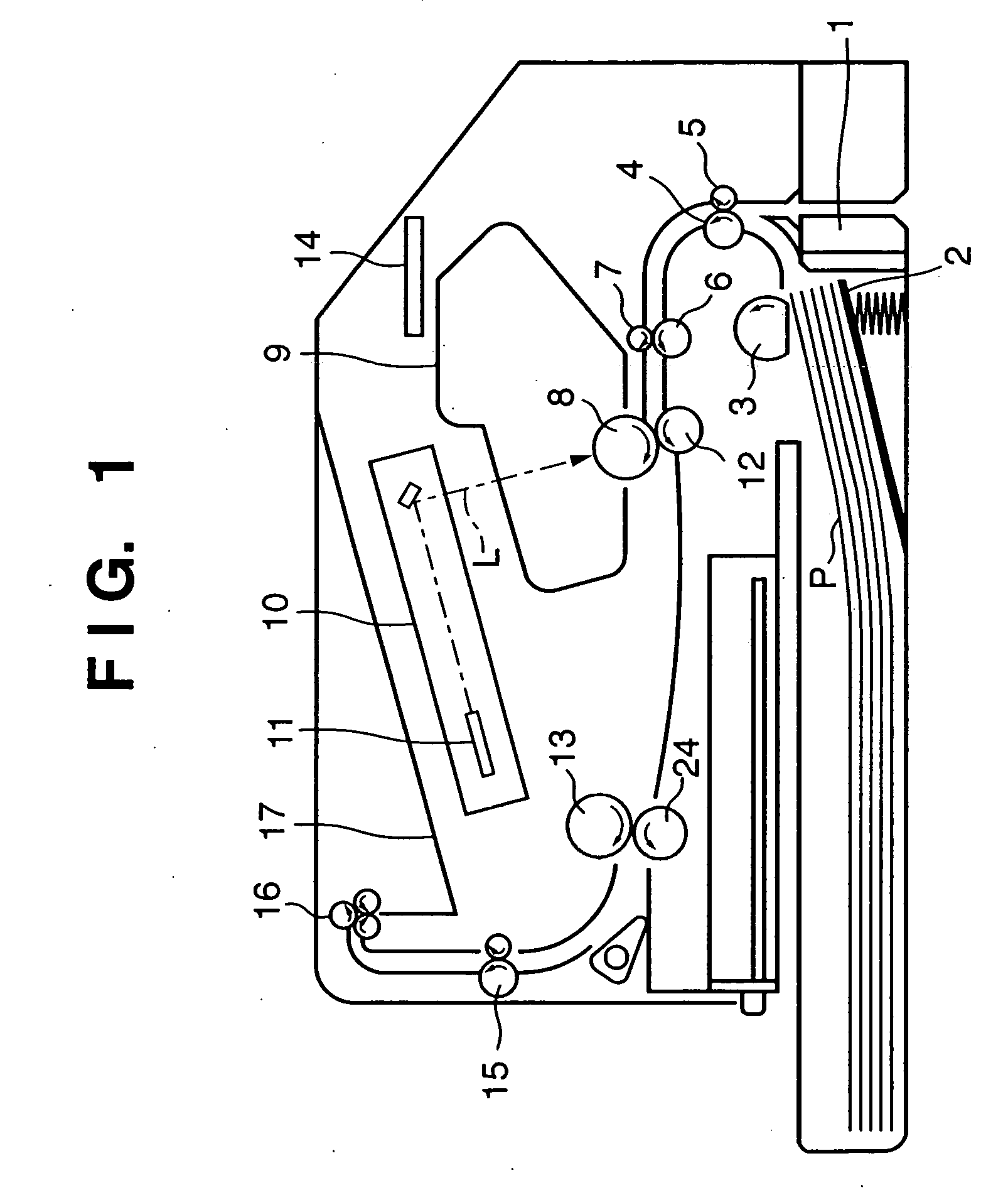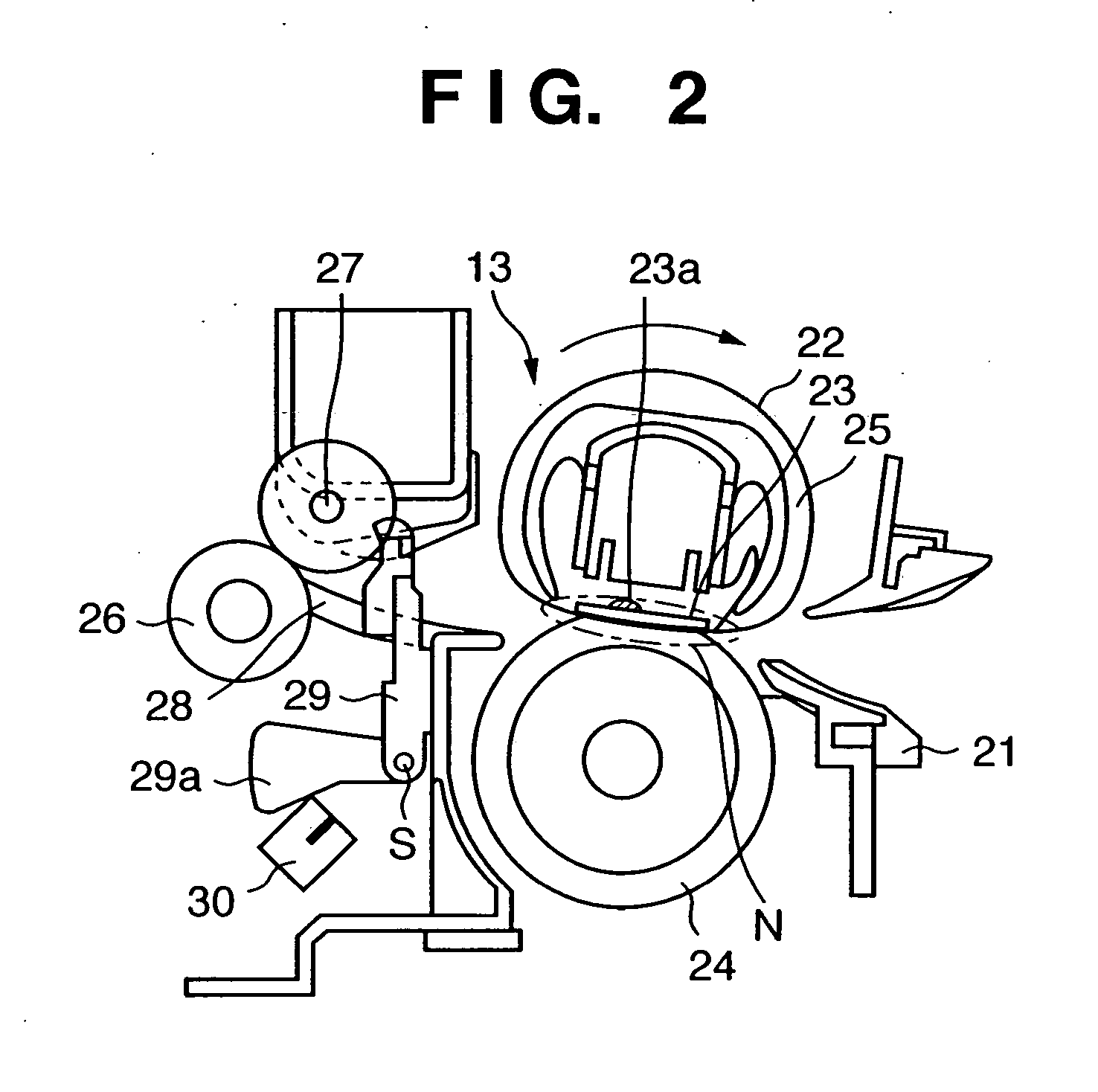Image forming apparatus and its control method
a technology of forming apparatus and fusing device, which is applied in the direction of electrographic process apparatus, instruments, optics, etc., can solve the problems of increasing the driving torque of the fusing device, increasing the cost of the device, and insufficient heat supplied to the toner on the printing material, so as to prevent the deformation of the printing material and stable fusing performance
- Summary
- Abstract
- Description
- Claims
- Application Information
AI Technical Summary
Benefits of technology
Problems solved by technology
Method used
Image
Examples
first embodiment
(Schematic Arrangement of Image Forming Apparatus)
[0054]FIG. 1 is a schematic sectional view of an image forming apparatus according to this embodiment. This image forming apparatus includes a paper feed device comprising a paper feed tray 1, sheet stacking plate 2, and feed roller 3. Printing materials P stacked on the sheet stacking plate 2 in the paper feed tray 1 are picked up one by one by the feed roller 3, starting from the uppermost printing material, and conveyed to a registration unit by convey rollers 4 and 5. After the conveying direction of the printing material P is adjusted by the registration unit comprised of registration rollers 6 and 7, the printing material P is fed to an image forming unit.
[0055] The image forming unit is comprised of a photoconductive drum 8, toner cartridge 9, laser scanner unit 10, transfer drum 12, and the like. Although the illustration of the arrangement of the toner cartridge 9 will be omitted, the toner cartridge 9 has an arrangement ...
second embodiment
[0112]FIG. 15 shows the arrangement of an image forming apparatus according to the second embodiment. The same reference numerals as in FIG. 1 denote the same constituent elements in FIG. 15, and hence a description thereof will be omitted. In addition, since the arrangement of a thermal fixing device in this embodiment is the same as that in the first embodiment, the thermal fixing device will be described by referring to FIGS. 2 to 8.
[0113] In this embodiment, an outside air temperature sensor 19 such as a thermistor for detecting an environment (room temperature) in which an image forming apparatus is installed is placed on, for example, a side surface of the apparatus body. The outside air temperature sensor 19 is placed near a cooling fan 18, which prevents a rise in temperature inside the apparatus by taking outside air in the apparatus, so as to accurately detect a temperature outside the apparatus. This makes it possible for the outside air temperature sensor 19 to accurate...
PUM
 Login to View More
Login to View More Abstract
Description
Claims
Application Information
 Login to View More
Login to View More - R&D
- Intellectual Property
- Life Sciences
- Materials
- Tech Scout
- Unparalleled Data Quality
- Higher Quality Content
- 60% Fewer Hallucinations
Browse by: Latest US Patents, China's latest patents, Technical Efficacy Thesaurus, Application Domain, Technology Topic, Popular Technical Reports.
© 2025 PatSnap. All rights reserved.Legal|Privacy policy|Modern Slavery Act Transparency Statement|Sitemap|About US| Contact US: help@patsnap.com



